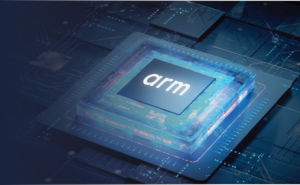In previous posts in this blog we have talked about the Distributed Management Task Force (DMTF) special interest group, of which AMI is a long-standing member, primarily in the context of the Redfish® hardware management standard, which AMI has incorporated into several products over the last few years.
Over the past few months, our Tech Blog has documented the growing and significant interest in the Redfish standard throughout the industry. Earlier this month, for example, we noted how the standard was formally adopted by both the International Organization for Standardization (ISO) and the International Electrotechnical Commission (IEC).
We are pleased to observe how momentum continues to build for Redfish, as DMTF has announced several recent strategic alliances with other special interest groups (SIGs) and industry associations to further promote and advance Redfish. Clearly, key players across the industry see the potential of Redfish and want to get on board with this leading standard for server and data center hardware management.
Here are some recent examples of key alliances forged by DMTF from recent news and announcements:
In late April, DMTF announced the formation of a new three-way alliance between itself, NVM Express, Inc. and Storage Networking Industry Association (SNIA) to coordinate standards for managing solid state drive (SSD) storage devices.
According to DMTF, “DMTF and SNIA have worked together as part of the DMTF’s Alliance Partner program for many years. Most recently, SNIA’s Swordfish™ standard is building upon DMTF’s Redfish® API to address enterprise storage services. NVM Express® is an open collection of standards and information to fully expose the benefits of non-volatile memory (NVM) in all types of computing environments from mobile to data center. The three-way alliance will work on scale out management for SSDs, helping enable a holistic management experience.”
Based on announcements and news surrounding this new alliance, the primary driver was the synergy between SNIA’s Swordfish and DMTF’s Redfish. However, the alliance’s collaborative work will include additional standards, such as NVM Express™(NVMe™), the NVM Express™ Management Interface (NVMe-MI™), DMTF’s Management Component Transport Protocol (MCTP), Platform Level Data Model (PLDM), and PLDM for Redfish Device Enablement (RDE).
At roughly the same time of the above announcement, DMTF announced “a bilateral alliance with the PCI Industrial Computer Manufacturer Group (PICMG) to help ensure the two organizations’ standards are coordinated and aligned in the Industrial Internet of Things (IIoT) domain. PICMG is a nonprofit consortium of companies and organizations that collaboratively develop open standards for high performance telecommunications, military, industrial, and general purpose embedded computing applications. This alliance will advance collaboration between the two groups as PICMG specifies Redfish API resources needed to support devices for IIoT. PICMG will also create and maintain Redfish extensions to support IIoT system deployments.”
As mentioned at the beginning of this post, this news about DMTF expansion is welcome to AMI because of its participation in this SIG for many years and its work to incorporate many of its standards, particularly Redfish, into AMI products.
Products from AMI featuring support for Redfish include the fully-integrated MegaRAC Pooled System Management Engine (PSME) firmware solutions, which enable efficient resource management for Network, Storage and Compute hardware throughout the data center.
Our MegaRAC Composer™ Pod Management Software also features support for Redfish, in addition to the Intel® Rack Scale Design specification. It allows users to browse physical resources at the rack, chassis and system level through an intuitive web-based user interface. Administrators can then compose and assign those physical resources to create a logical node, which provides the advantage of demand-driven dynamic scaling to optimize datacenter resource utilization.
Beyond this, AMI is looking at more integrated applications of Redfish across product lines and groups for a more complete system manageability solution, where the BMC provides full out-of-band management and the Redfish interface, which Aptio® V UEFI BIOS Firmware delivers the system asset and platform configuration tools.
What are your thoughts on the expansion of DMTF as a driver of Redfish adoption? Are you familiar with this protocol? Drop us a line via social media or our Contact Us form and let us know and as always, thanks for reading!






